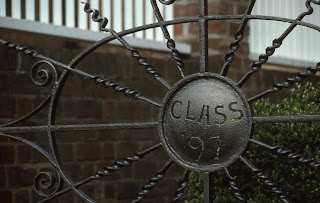"People who need people
Are the luckiest people in the world."
- Bob Merrill
Remembering that this blog is about my journey back to film photography, when I first began using a "higher quality" SLR camera (a Minolta XG that I bought the very day I received my first music teacher paycheck in September, 1980) I quickly discovered that I did not feel comfortable taking photos of people. Sure, there are a lot of fun-to-take but poorly-composed snapshots from those years. But as I began to aspire to become a more "serious" photographer and focus on making good travel photographs, I not only avoided having people in my photos, but I also actively excluded them. I wanted that perfect shot of that great landmark, and people simply got in the way. I could wait patiently for a long time until all the people were gone so I could ge my shot.
However, my photos of great historical sites look like . . . well . . . like everybody else photos of the same sight. There was always a nagging thought in my mind that, as least back then, I could have bought slides of places like Mt. Rushmore that looked better than mine did at the souvenir shop.
I'm now in my second go-around with film photography, and the influence that Robert Frank, Gary Winogrand, and Vivian Maier have had on me has forever changed my vision. Sure, there are many photographic opportunities where people are not needed, and all the work from Ansel Adams to John Shaw (and many others) bear that out. But my journey has taken me to where I can begin to see the photographic potential of people being interesting, unique, or even ironic. I now look forward to taking my camera out to places where there are lots of people doing things that catch my eye.
 |
| Mandolin Picker, Bear on the Square Festival, Dahlonega, Ga. |
 |
| Brooklyn Street, Brooklyn, NY. |
 |
| Folk Dancers, Bear on the Square Festival, Dahlonega, Ga. |
 |
| 4th of July Parade, Hilton Head Island, SC |
 |
| Guitar Picker, Bear on the Square Festival, Dahlonega, Ga. |
Chances are that Mt. Rushmore will look pretty much the same next year as it does this year. But everyday people are out doing things that may never get reported exactly the same way. I now enjoy the challenge of seeing the uniqueness of a given moment and capturing it on film for posterity. I urge you to load your camera and get out there. Photographers need people, and that make them the luckiest people in the world!

















